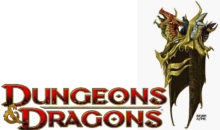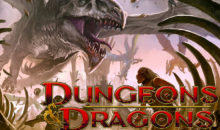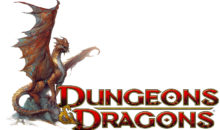Review: Mario and Luigi: Dream Team
While it may not be quite up to the standards of past Mario and Luigi games, Dream Team is still a fun entry in the series. Its biggest drawback is its plodding pace, but if you can get past that, this is a worthwhile game for fans of the Mario and Luigi series and the character of Luigi himself.
Earlier this year, Nintendo announced that 2013 would be known as the Year of Luigi, dedicating the year to Mario’s often-marginalized younger brother. This was reflected in a handful of video game releases this year, starting with Luigi’s Mansion: Dark Moon and continuing with the expansion to New Super Mario Bros. U, titled New Super Luigi U. The third and apparently final title to be released under the “Year of Luigi” banner is this past summer’s Mario and Luigi: Dream Team.
Dream Team is not only the third “Year of Luigi” title, but also the fourth entry in the Mario and Luigi series, joining the ranks of Superstar Saga, Partners in Time, and Bowser’s Inside Story. A hybrid of action-platformer and role-playing game, the Mario and Luigi series has a history of colourful characters, witty over-the-top dialogue, and innovative gameplay. Each title sees you playing as both Mario and Luigi – often simultaneously – as you explore foreign lands and (usually) rescue Princess Peach.

This time around, the brothers Mario have landed on Pi’illo Island, home of an ancient and thought-to-be extinct race of pillow people of the same name who have deep ties to the Dream World. After the inevitable calamitous event that results in a terrible evil being unleashed, the Pi’illo are awakened and the brothers are off to restore peace to the island. To do so, they’ll have to navigate between both the real world and the Dream World.
And therein lies Dream Team’s central mechanic. Just as the excellent Bowser’s Inside Story had Mario and Luigi enter Bowser’s body (ew, not like that. Think Magic School Bus) and manipulate him through their actions, this game sees Mario often entering Luigi’s dreams, Inception-style. While the younger brother sleeps, you can manipulate his body with the touchscreen (such as yanking his moustache or tapping his nose to make him sneeze) in order to alter the landscape of his dreams.
 Fans of the Mario and Luigi series will feel right at home with the familiar and fun gameplay. Battles involve a turn-based combat system that incorporates timed attacks and dodging, meaning players always have to pay attention to the timing of enemy attacks. Also, many favourite characters return from previous installments, such as Broque Monsieur, Popple, and Bowser’s trio of minions.
Fans of the Mario and Luigi series will feel right at home with the familiar and fun gameplay. Battles involve a turn-based combat system that incorporates timed attacks and dodging, meaning players always have to pay attention to the timing of enemy attacks. Also, many favourite characters return from previous installments, such as Broque Monsieur, Popple, and Bowser’s trio of minions.
Unfortunately, Bowser’s Inside Story‘s delightfully insane antagonist Fawful is ancient history, and Dream Team‘s villain, Antasma, is a poor substitute. Despite a neat visual design, Antasma is fairly forgettable, more an afterthought to get the story going. In fact, after a certain point, Bowser tends to steal the limelight as the game’s main antagonist. To be honest, this is something of a disappointment, considering how Bowser’s Inside Story did so much to elevate the character to a role beyond simple villain. In this game, he’s back to being the simple villain.
Another small missed opportunity is the fact that, for a game that has you entering Luigi’s dreams, there’s very little examining who Luigi is as a person and what makes him tick. Bowser’s Inside Story was as much a character study as it was a game, and by the time it was over you felt you knew Bowser literally inside and out. No such study exists in Dream Team, save for a few moments when things become dire and Luigi’s mind is flooded with messages of “Big Bro’s in Trouble!” and “Gotta save my Bro!” We see that much of Luigi’s motivation is fueled by his desire to be there for his brother, but beyond that there’s not much else going on. I suppose it’s odd to criticize a game for its lack of psychoanalysis, but it really does seem like a missed opportunity.
Fortunately the battles are as fun as they’ve ever been. Special attacks range from classic staples (like kicking a red shell at the enemy) to the delightfully bizarre (like attacking the enemy with a hammer while riding a skateboard), but they’re always a lot of fun to utilize. The special attacks in Luigi’s dreams are especially unique, as they always involve dozens of Luigi’s combining their powers in fun ways (such as rolling over the enemy with a Luigi ball or crushing them with a Luigi tower). The enemies’ attacks all vary and have different dodging requirements, so you never find yourself just pressing a button repeatedly to finish a fight and move on.
 Occasionally, you’ll fight a boss battle as a giant Luigi, turning the system sideways in order to capture the sheer size of the enemies. These are always a treat, though sometimes require a bit too much motion control, and I found that these controls wouldn’t always work. Still, they’re wonderful spectacles and are some of the game’s best moments.
Occasionally, you’ll fight a boss battle as a giant Luigi, turning the system sideways in order to capture the sheer size of the enemies. These are always a treat, though sometimes require a bit too much motion control, and I found that these controls wouldn’t always work. Still, they’re wonderful spectacles and are some of the game’s best moments.
The game is the first Mario and Luigi title for the 3DS system, and as such the graphics have been amped up sufficiently, while still maintaining many of the classic cartoony visuals the series is known for. The backgrounds are often colourful and bright, with the 3D effect put to subtle and effective use. The characters themselves are a bit more retro, and while their 2D, more pixelated look might sometimes clash with the polished backgrounds, it’s a minor complaint.
What’s less minor, however, is the game’s pacing. Past games in the series have taken usually around 20 to 30 hours to finish. Bowser’s Inside Story, for example, took about 25 hours to beat, and even at that length felt a bit too long. Dream Team takes about 40 hours to beat the main storyline. This wouldn’t normally be a problem (after all, many RPGs can run over 100 hours), except that the last 10 hours or so are incredibly tedious. Dream Team kicks into its “final act” momentum about 25 hours into the game, and then… just keeps going and going and going. I kept getting ready for the game to end, only to reveal that I had to explore just one more floor of Bowser’s Castle. Again, this wouldn’t be a problem if it weren’t for the repetitive nature of the last 10 hours, fighting the same enemies (and bosses) over and over again. Perhaps this was made worse by the fact that Pokémon X came out and I was especially eager to finish up with Dream Team so I could start catching Pokémon in the Kalos region, but I kept getting ready for the game to reach its natural end, and it just. Fucking. Wouldn’t.
Despite outstaying its welcome by a good 10 hours, Dream Team is still a fun game overall, just not quite up to the standards of the Mario and Luigi series. If you’re a huge fan of the series, I certainly recommend giving this title a try with that caveat in mind. If on the other hand you’ve never played a Mario and Luigi game before, you’d be much better off tracking down a copy of Bowser’s Inside Story. I guarantee you’ll have chortles.







